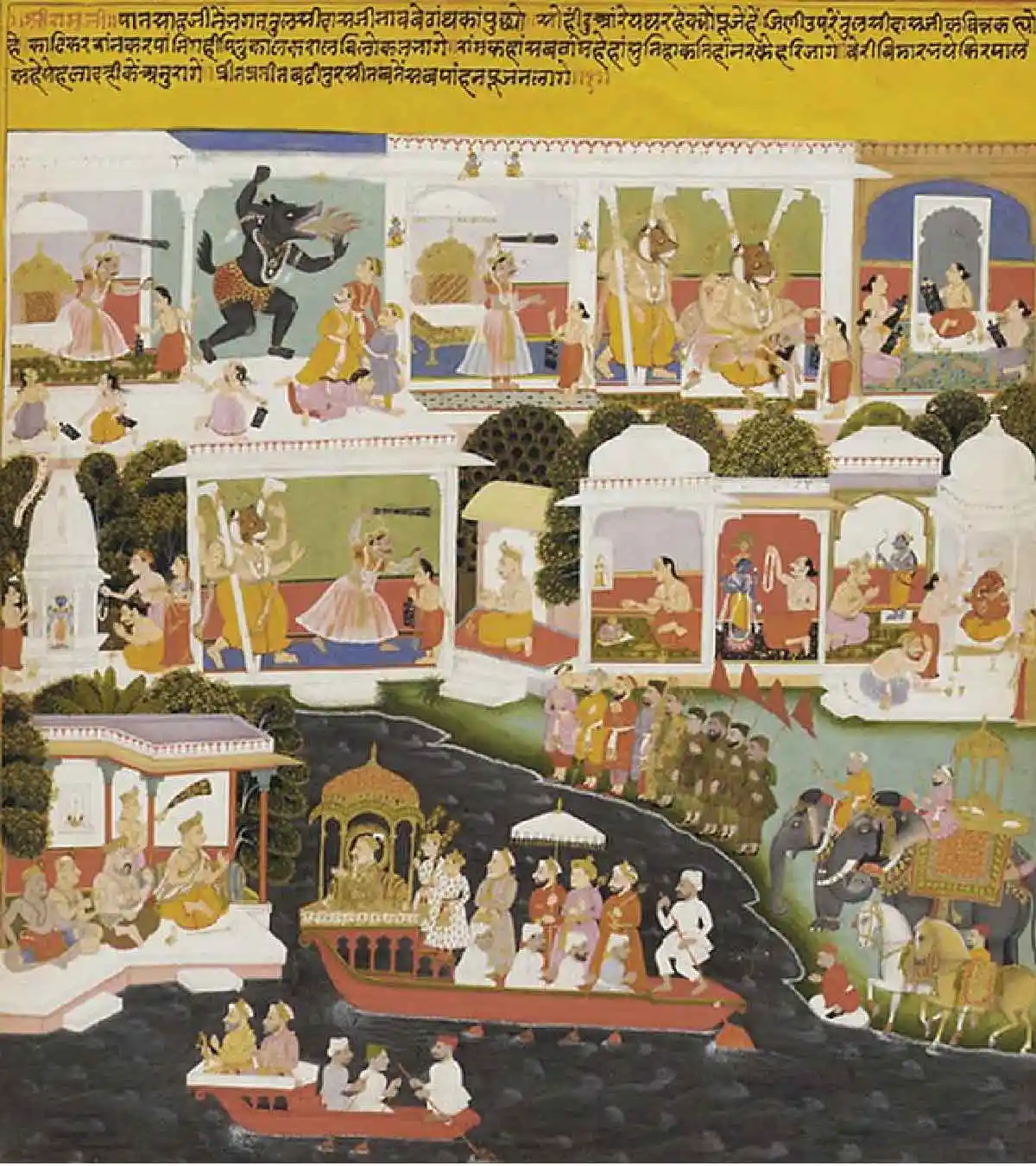Mewar and its Miniature Beauties
The Mewar School of Miniature Paintings was a very significant school under the Rajasthani School of Art. It explored the mythos and folk tales religiously but also created wonders in portraying the reality and keeping accounts of the events of the kingdom.

Battle in Lanka by Sahibdin Source:Wikimedia Commons
A center for artistic brilliance, the Mewar school of Miniature paintings stands as one of very first significant centers of paintings in Rajasthan. However, before we begin, it is important to note that most of the early examples of this school of art were wiped out entirely due to long wars with the Mughals.
Due to the above, the emergence of this school is known to have started with an early dated work by Nisardin in Chawand in 1605 which was a set of Ragmala Paintings (Pictorial depiction of Indian Ragas and Raginis). This information about the set is known to us because of a colophon page that was found with the painting. The set of paintings has close affinity with the style of pre-seventeenth century art in its approach that is direct, simple compositions and little elements of décor here and there and vibrant colours.
The school found its definition and understanding under the reign of Jagat Singh I (1628-1652) with the help of artists such as Sahibdin and Manohar who helped build the vocabulary of Mewar miniature paintings.
The Ragamala, Rasikapriya, Bhagvata Purana, and the Yuddha Kanda of Ramayana were all completed by Sahibdin. Despite being a Muslim, he was comfortable with Hindu themes, and produced multiple paintings illustrating the Hindu epics. His work often featured abstract imagery that was very bright and full of religious fervour.
Sahibdin’s 1652 depiction of Yuddha Kanda, The Book of Battles (a collection of war scenes from the epic "The Ramayana") is often referred to as Jagat Singh Ramayana.
He used various narrative techniques and carefully crafted a novel pictorial device to impart credibility to the ambitious scale that war picture encompassed. Here, he either layered several episodes into a single painting or spread a single episode over more than one folio.
On the other hand, Manohar was celebrated for the depiction of Bal Kanda from Ramayana (1649), which was considered to be one of his best work.
Apart from them, Jagannath was another painter who was exceptionally gifted. He painted the Bihari Satsai in 1791, which was a one of a kind contribution to the Mewar school.
Soon, with time, the content and context of Mewar School of painting started to shift. From textual representations the Mewar artists started to focus on the “now”. Court scenes and the lifestyle of the royals began to be the main focus of the artists.
Mewar paintings increasingly came to feature a secular and courtly ambience. This can be seen in the increasing obsession with portraiture, not to mention outsized and flamboyant court scenes, hunting expeditions, festivals, zenana activities, sports…the list goes on.
A folio depicts the Maharana Jagat Singh II on an outing hawking. The artist presents him in a scene, but to get a panoramic view he raised the horizon at a tangent compared to the foreground. This turned out to be reportage at its best!
Apart from this, A center of Vaishnavism, Nathdrawa came up with their own school of art under Mewar with paintings and large cloth backdrops called Picchwais for their deity, the celebrated Shrinathji.
With a keen interest in depicting tales, lore and happenings in palettes of bright and intense colours with the touch of reds and yellows, the Mewar school of miniature paintings knew exactly the way to capture time and its essence.

Prince visits Poet Tulsidas Source: Wikimedia commons


